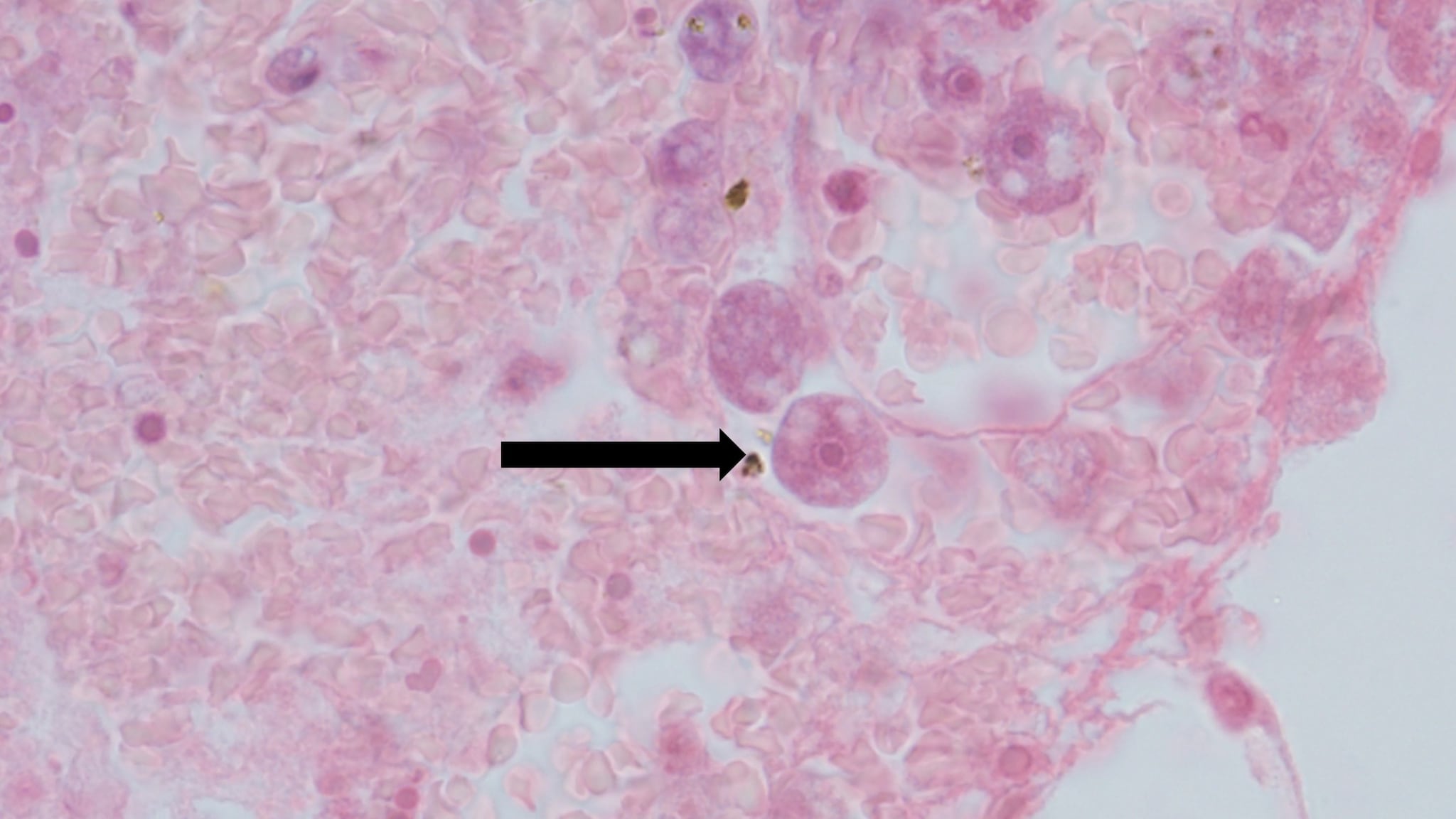What to know
- Acanthamoeba infections often are misdiagnosed as other illnesses.
- Tests are available to diagnose Acanthamoeba infections.
- CDC can help with testing for Acanthamoeba infections.

Testing and diagnosis
Clinicians
Acanthamoeba can cause a serious brain infection called granulomatous amebic encephalitis (GAE). GAE can be confused with other neurologic diseases and conditions, even noninfectious ones like stroke. Tests useful in the diagnosis of GAE include brain scans, biopsies, or spinal taps.
Disseminated Acanthamoeba infection can affect many organs in the body. GAE and other infections caused by Acanthamoeba, including cutaneous acanthamoebaiasis (skin infection) and Acanthamoeba rhinosinusitis (sinus infection), can spread to cause disseminated infections.
GAE and disseminated infection can be difficult to diagnose and are often at advanced stages when identified. GAE often is diagnosed after someone dies. For all disease presentations, biopsy of the sites involved such as the brain, skin, or sinuses is most helpful in making a diagnosis.
Tests that can help confirm a diagnosis of Acanthamoeba infection:
- Immunohistochemistry (IHC) and indirect immunofluorescence (IIF) staining use specific antibodies against Acanthamoeba to detect the ameba.
- A polymerase chain reaction (PCR) molecular assay can detect Acanthamoeba DNA in tissue.
CDC offers diagnostic assistance and testing for Acanthamoeba to physicians and scientists through DPDx and the Free-living and Intestinal Amebas (FLIA) laboratory.
Morphology experts at DPDx can evaluate microscopic images, while the scientists at the FLIA laboratory provide diagnostic assistance using molecular and immunofluorescence assays.
